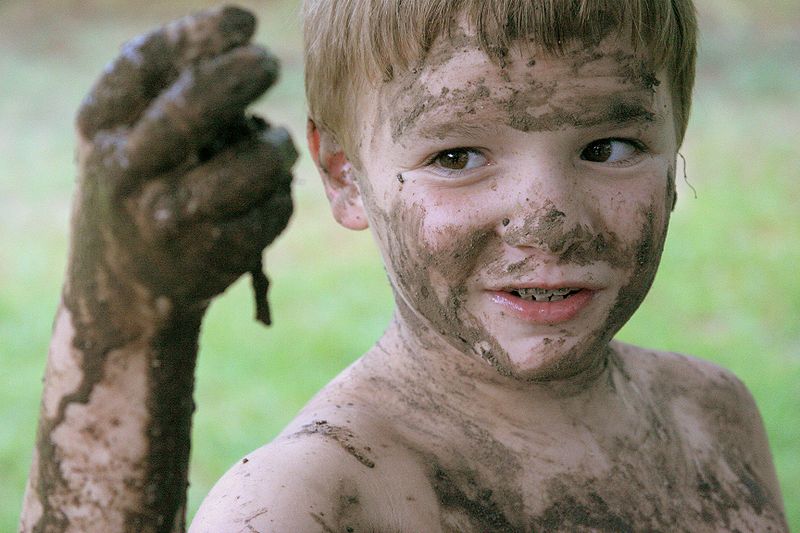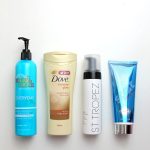Clay is pretty amazing, isn’t it? You can make art with it, you can slap it on your skin, you can even eat it for digestive problems! I’m only going to talk about how great it is for your skin today, but I thought we should take a moment to appreciate how useful mud is, except when it gets on your car/shoes/dog. Ok, done.
One of the things that always makes my oily skin feel clean and refreshed is a clay mask. Clay is very absorbent, and no doubt part of the “clean” feeling is just the clay temporarily tightening my skin by drying it out… but clay also sucks oil out of your pores, and any other crap that’s currently dissolved in the oil, that could later oxidise and form plugs and blackheads. This is why pores seem to shrink right after a clay mask!
There’s not much published scientific research on clay – however, one recent study found that daily clay applications on rats increased the number of collagen fibres. Clay has also been found to speed up collagen synthesis in skin lesions – since loss of collagen is one of the causes of old-looking skin, this might be why clay is so popular!
However, there are lots of different types of clay, containing different proportions of minerals. There are a lot of conventionally accepted recommendations for which clay to use for your skin:
Kaolin – this is an all-purpose clay that’s good for all skin types, including sensitive skin. It’s said to soothe irritated skin and soak up oil.
Green French clay – this clay sucks all your oil out! Good for oily skin.
Bentonite – this is the main component of “volcanic ash” clays. It’s good for normal and oily skin.
These are the most common clays used in skincare, but there are plenty more!
Check back in a few days for my DIY in-shower clay scrub/lazy mask recipe 🙂
References
C Viserasa, C Aguzzib, P Cerezoa and A Lopez-Galindoc. Uses of clay minerals in semisolid health care and therapeutic products, Appl Clay Sci 2007, 36, 37.
DMZ Valenti, J Silva, WR Teodoro, AP Velosa and SBV Mello. Effect of topical clay application on the synthesis of collagen in skin: an experimental study. Clin Exp Dermatol 2012, 37, 164.







Very interesting – I never knew about the different types of clay!
It’s pretty cool! 🙂
Clay is amazing, also to play in LOL
Kaolin is great if you have parrots (in the wild they flock on certain kinds of clay eating it, some clay have the ability to neutralize poisons from their natural food, so without the clay..)
And Bentonite is also used for cat litter 🙂
I look forward to your recipe 🙂
Yeah, clays have great absorption properties! 🙂
FANTASTIC POST!! I have quite oily skin, and my dermal clay cleanser is the absolute best! Makes my skin feel so fresh, is really cooling and cleansing. Looking forward to seeing your DIY recipe! xx
It’s so great to have something that kills the grease 🙂
Interesting read. I haven’t done a clay mask in years. But I remember loving them :]
I forget about clay masks for months at a time, months! Even though my tub sits next to my toothbrush 🙁
I have just been thinking I need to use masks and scrubs as my skin is terrible at the moment. I used to use mud masks all the time. I need to go back to that! Looking forward to your recipe!
that sounds like a good idea – I always forget what works until my skin is horrible haha…
Yay for clay! I’ve got so many new beauty things to try thanks to you! I’ve just added clay masks to my list. 🙂
i love your posts! so educational=]
Hi Labmuffin, I know this post is a bit old but I came looking hoping you might be able to explain exactly how clay in cleansers/masks work. The thing confusing me is when we make up a mask and put in helpful and nice juice/tea/oil etc so we can smear it on how does they clay still do it’s absorbing? Especially if we use oil to make our mix, if the clay is all saturated with our nice oil how can it suck up the dirty grease from our pores? Thanks in advance for your brain power on this x
The clay is attracted to different chemicals (water, oils, dirt etc.) with different strengths, so theoretically some of the stuff on your skin may be able to preferentially stick to the clay… but usually clay mask makers don’t take that chance, so they recommend that you let the clay mask dry – in other words, some of the water evaporates and is lost to the air, which leaves some space in the clay for absorbing face dirt 🙂